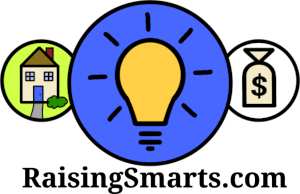Important: The information contained in this article is for informational and entertainment purposes only and should not be considered legal or investment advice.
The Ins and Outs of Interest: Understanding the Mechanics Behind Borrowing and Lending
When it comes to borrowing money, whether it's from a bank, credit card company, friend, or family, understanding the concept of interest is crucial. Interest is the amount you pay for using someone else's money, and it is money you pay back, above and beyond the amount borrowed. Routinely paying large amounts of interest can increase the cost of everything you buy, and greatly impact your financial situation. In this blog post, we'll delve into the world of interest, exploring how it works, its different types, and why understanding it is critical to your financial success (or failure).
What is Interest?
Interest is a percentage of the borrowed amount that you pay back, in addition to the original loan amount. For example, if you borrow $1,000 at an annual interest rate of 10%, you'll need to repay $1,100 (the original $1,000 + $100 in interest) over a year.
Why does a lender charge interest?
When someone loans you money (or when you loan a bank money), that person is giving up the ability to use their money for a period of time. After all, they've given it to you to spend on something you want. You benefit by having immediate access to money. They benefit from receiving extra money back over what they loaned, in the form of interest.
Types of Interest
There are several types of interest, including:
- Simple Interest: This type of interest is calculated as a percentage of the principal amount only. For example, if you borrow $10,000 at an annual simple interest rate of 5%, you'll need to repay $10,500 ($10,000 + $500 in
interest) over a year. - Compound Interest: Unlike simple interest, compound interest is calculated on both the principal amount and any accrued interest. This means that the interest earned in previous periods becomes part of the new principal for
future calculations. For example, if you borrow $5,000 at an annual compound interest rate of 10%, your total balance after one year would be $5,500 ($5,000 + $500 in interest). - Variable Interest Rate: This type of interest is tied to market conditions and can fluctuate over time. The interest rate may change based on the lender's discretion or in response to changes in economic conditions.
- Fixed Interest Rate: Conversely, a fixed interest rate remains constant throughout the loan term.
Factors Affecting Interest Rates
Several factors can influence interest rates, including:
- Credit Score: A higher credit score generally translates to lower interest rates. Lenders view borrowers with excellent credit as less risky and offer more favorable terms.
- Loan Term: Longer loan periods often result in higher interest rates, while shorter loan periods may lead to lower rates.
- Debt-to-Income Ratio: Borrowers with high debt-to-income ratios (i.e., a significant proportion of their income is dedicated to debt payments) are more likely to qualify for less favorable terms and higher interest rates.
- Economic Conditions: Interest rates can rise or fall in response to changes in the economy. During times of economic downturn, lenders may increase interest rates to make borrowing more expensive.
- Who you are borrowing from: You can borrow from a bank, and finance company, a payday lender, friend, or relative. Each has a different reason they are willing to lend money and has a different target audience. Payday lenders and credit card companies will often charge much higher rates than traditional banks, regardless of your credit score.
- Is the loan secured: A secured loan typically requires collateral or a guarantee, such as the right to foreclose on your home or repossess your car, whereas an unsecured loan does not. Unsecured loans are more risky as it will be hard for the lender to recover their money if you don't pay, so will typically have a higher interest rate.
How to Calculate Interest
Calculating interest involves multiplying the principal amount by the interest rate (expressed as a decimal) and then adding any accrued interest.
For example, if you borrow $5,000 at an annual simple interest rate of 10%:
- Multiply $5,000 by 0.1 (10% expressed as a decimal): $500
- Add the result to the principal amount: $5,000 + $500 = $5,500
Managing Interest
Understanding how interest works is essential for managing your debt and making informed borrowing decisions. Here are some tips:
- Choose the right loan: Carefully consider loan terms, interest rates, and repayment schedules when selecting a loan.
- Pay more than the minimum: Paying only the minimum payment can lead to longer repayment periods and higher total interest paid over time.
- Consider refinancing: If you're struggling with high interest rates or unfavorable loan terms, refinancing may be an option.
Conclusion
Interest is an integral part of borrowing money, and understanding its mechanics can help you make informed decisions about your financial situation. By grasping the different types of interest, factors that affect interest rates, and how to calculate interest, you'll be better equipped to manage your debt and achieve long-term financial stability.
The interactive calculator below allows you to calculate payments based on amounts borrowed, interest rate, and term. Take note of how changing the term of your loan can drop the payment amount, but really increases the cost to borrow money!!
| Amount Borrowed: | Payment: |
| Interest Rate: % | Total Payments Made: |
| Term (months): months | Cost to Borrow: |
